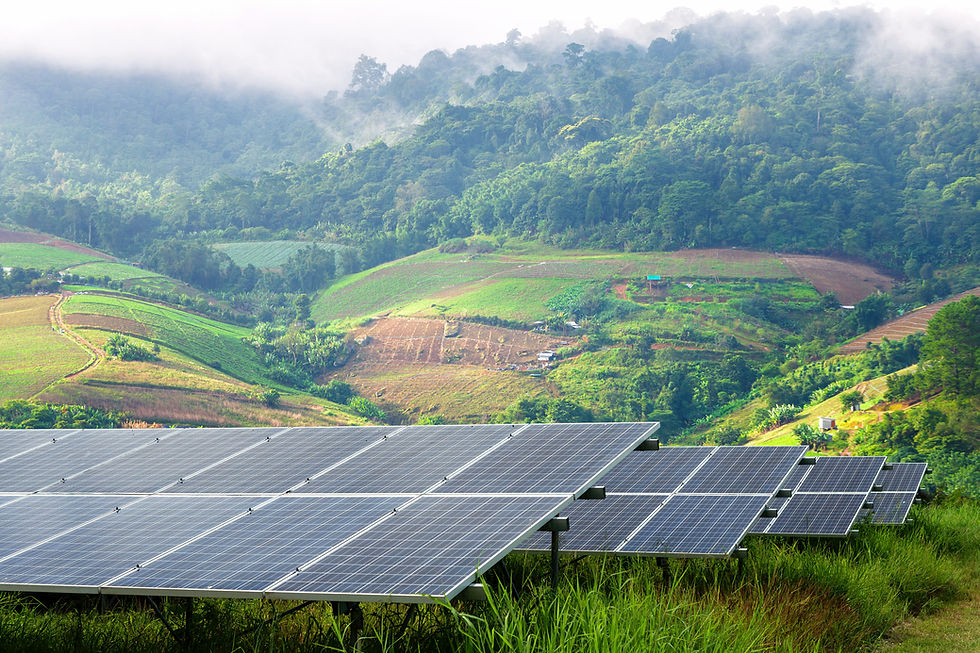Five Solar Trends in 2022
- HBCU Coalition
- Mar 24, 2022
- 3 min read
As the U.S. sanctions imports of Russian oil in response to its’ invasion of Ukraine, we have yet another rationale to move more quickly to green energy. Of course, combatting climate change remains the most significant reason but energy independence is a pretty good one too. And since there is no shortage of power available from the sun, solar remains the most abundant green energy source currently available. While continued growth in solar was already predicted for 2022, these world events could likely increase it further. In addition, other factors will continue to drive accessibility to a larger percentage of the population. The Clean Energy Initiative highlights five of the major trends to look for in 2022.

1. New applications
As solar energy technology advances, its use in a variety of products is becoming more widespread and affordable. For example, using solar power in large parking installations is cheaper than running electrical wires underground and it substantially reduces energy bills. PV noise barriers near communities, schools and hospitals reduce unpleasant noise while also generating renewable energy. EV chargers are increasingly powered by solar panels. And micro grids have also risen in popularity for residential customers over the last few years and are rapidly moving into the commercial sector.
2. Increased use of solar storage
With numerous power outages occurring over the past several years caused by increased power grid demand and natural disasters, it has prompted many consumers and businesses to look for ways to be more self-sufficient and consider solar batteries. At the same time, cost reductions, tax credits, and increased capacity make it a much more attractive option.
3. Tax credits
While over 90 percent of Americans want solar, only about half want to pay for it. That’s why tax credits currently available through 2022 will need to be extended to continue the momentum of adoption. The residential solar segment hit a record high in Q3 2019 with 71.3 GW of installed capacity, which was enough to power 13.5 million homes. While it’s just a fraction of what we need to combat climate change, it’s a start. Mandates by states like California that are now requiring almost all new residential and commercial construction to include solar panels will also lead to increased adoption.
4. Acceleration of innovation, durability, and functionality
Solar technology’s durability and effectiveness will continue to improve. This is significant for increased commercial adoption as maintenance costs can be substantial compared to residential applications. As panels become more efficient, they also enable homes and businesses to produce more electricity in a limited space. Other options such as solar shingles and even liquid solar panels are showing promise while advanced solar inverters are helping to boost total solar system efficiency.
5. Diversification of energy sources by utility companies
Traditional utility companies will diversify more to include renewables. Over the last five years, the priority has been to transform business models into a greener, more intelligent energy system. By taking advantage of technological innovations in addition to alternative energy sources, utilities are able make the delivery of energy more efficient. Smart buildings, smart grids and smart meters will all play a part.
In summary, increased adoption of solar energy remains our best option to fight climate change. It’s no longer debatable that our planet is reaching a perilous point with catastrophic weather events increasing, alarming decreases in biodiversity and regions of the world becoming uninhabitable. The only question that remains is whether the world will act fast enough. And as the clock ticks, solar is the most consumer-friendly and heavily developed renewable energy source that we currently have at our disposal.
For more information about the Clean Energy Initiative, click here.
Do you operate a green or clean tech business or project that targets HBCUs, minority-serving Institutions (MSIs) or low- and moderate-income households and communities?
If so, the HBCU Clean Energy Initiative through a collaborative partnership offers you an opportunity to list your clean energy-related business, expertise, and other interests in our searchable online directory and database free of charge. Click here for more information.
And don’t miss our next event!
Virtual Discussion Series: Workforce, Economic Development and Equity: Cultivating HBCU-State Energy Office Partnerships for Implementation and Impact
Hosted by the HBCU Community Development Action Coalition Clean Energy Initiative and the National Association of State Energy Officials
Discussion 3: The Role of Community Colleges and Two-Year Institutions in Energy Sector Workforce Development
Wednesday, April 13, 2022, 1:00-2:15 p.m. Eastern Time

Comments